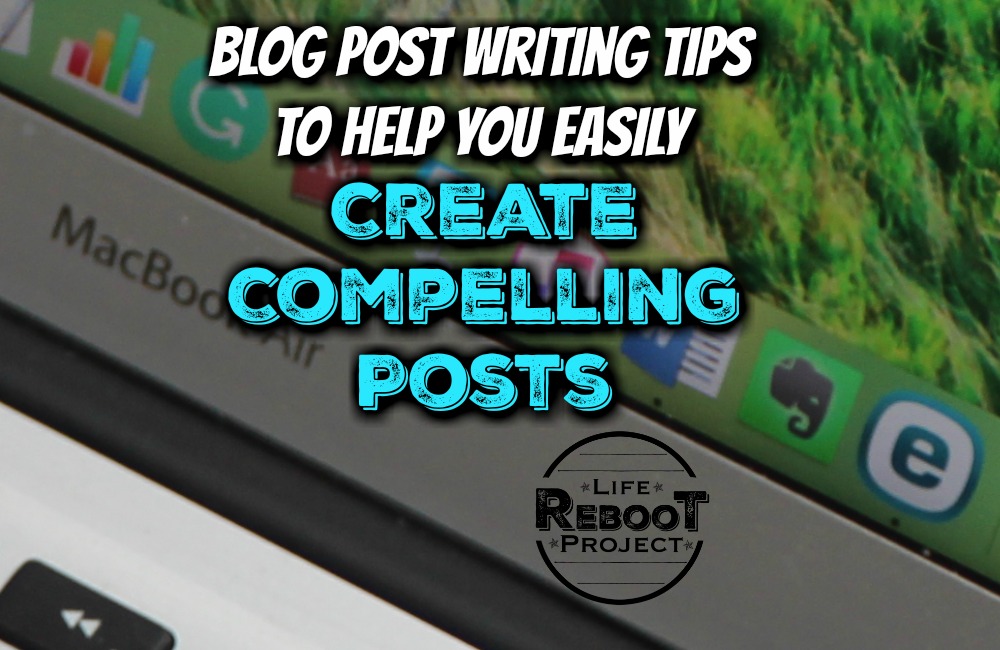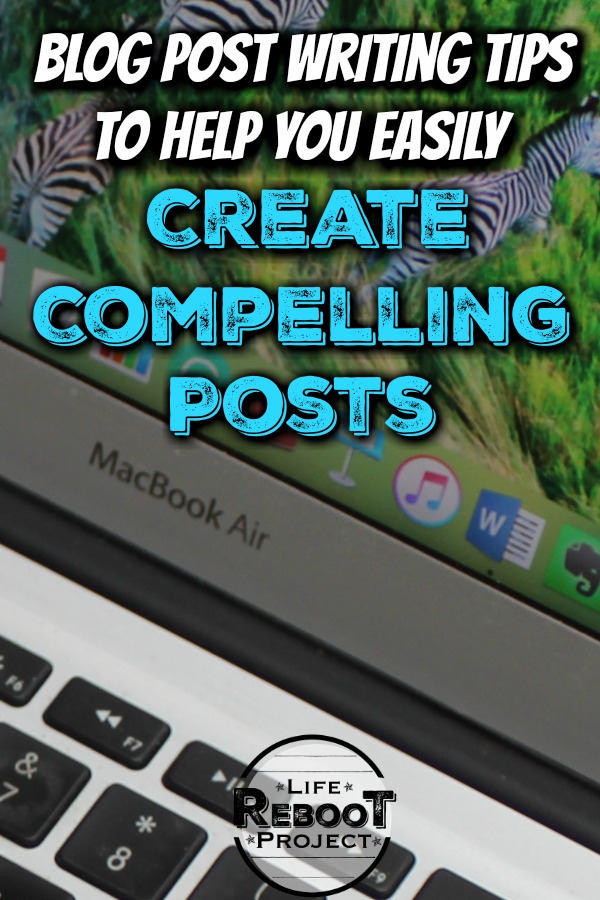
Does writing a blog post feel like pulling teeth every time? Do you struggle to write a blog post that flows effortlessly from beginning to end? Rest assured, I probably struggled with this as much or more than you throughout my entire blog career. Well, I think I’ve finally defeated the blog post-crushing monster once and for all.
I’m sitting down here to write this one when just twenty minutes ago I had no idea what topic to even write about. Now I have it adequately outlined, and I’m tearing through it at a torrential pace. If you are like me, the problem isn’t that you don’t know what to write about, the problem is that the path from beginning to end isn’t clear enough in your mind.
If you are like me, the problem isn’t that you don’t know what to write about, the problem is that the path from beginning to end isn’t clear enough in your mind. The secret, I have found, is writing the post in chunks, then going back later to assemble it like a jigsaw puzzle. Below I created a list of ideas to insert into your post outline. Write each of these ideas in chunks.
Only concentrate on one chunk at a time. When the post is done, copy and paste each chunk into a separate document. Then go back and edit it and polish the flow between the pieces. This method has increased my blog post writing speed as well as the clarity within the post. Create for yourself a template in which you can fill in the blanks. Ok, let’s dive into each one of the main chunks for a compelling blog post.
Blog post writing tip #1; Chunk your writing into sections.
Chunking the writing into sections was the idea which helped me the most. Staring at a blank screen knowing you needed to fill it with all the different elements and still have it come to a word count of 1,100 to 1,500 became an ominous task. Having to complete small chunks of one idea at a time took a lot of pressure off my mind. When I sat down and looked at my template piece of paper, I just filled in the blanks as the ideas came into my head.
If the story related to the topic was first to mind, I flushed it out early when the idea was fresh. This also meant it was easy to stop and start throughout the writing process. Sometimes I may have five to ten articles at different points in progression on my desktop. When some more ideas would come to mind for any one of the articles, I would open them up and plug more into different parts of the outline.
When you write in one long continuous document if you start then stop, then go and restart, you will probably have to go back and reread quite a bit of what you already wrote to get a sense of where you were. With a writing outline broken up into chunks, open it up and plug in the next piece of writing.
Blog post writing tip #2; Know your category, keyword, and main idea before you start.
I never used to follow doing all three, in the beginning, now I’ve changed my tune and have all three nailed before I start. I used to hit the main idea; then as I got writing the article, I filled in the keywords and the categories as I went along. I stopped this now, and here is why. First, I need to have a complete idea in my head as to where the article needs to go and the audience to which I’m writing.
If I leave out the primary keyword, I don’t know what to insert for specific word choices. For instance, the keyword for this article is, “blog post writing.” If I use the word ‘blog post’ or ‘writing tip,’ it won’t have the same SEO impact as just inserting ‘blog post writing.’
This also works for the category. I like to add the category in my post here and there to try and give a good sense of where the post belongs in my blog structure. I’m not sure if this matters for SEO, but I think it might.
Blog post writing tip #3; Create your H2 sub-points.
Creating H2 tag sub-points is not only good for SEO but also helps break the main body of your article into manageable blocks of writing. This goes back to the first tip about writing in chunks. If you break the center into four or five manageable sub-points, it will make writing as well as reading easier. If I have five sub-points I want to hit, I may write number one, then write number five, then go back and write number two. As the ideas hit, I sit down and flush out that particular section.
Oh, did I mention that having H2 tags in your posts is good for SEO? Google and other search engines love it when you break up your content using H (heading) tags. This lets them easily know what your post is about. Search engines will reward you for it by pushing you higher in search results.
Blog post writing tip #4; Create your opening and closing paragraphs.
Your opening and closing paragraphs will comprise two more sections of your blog post. Your opening paragraph will act to hook the reader into reading further down the page. Your closing paragraph will act as an excellent tidy conclusion to your entire post. The trick to the opening paragraph is to be enticing without revealing too much. You want your audience to be interested enough to read the rest of your article.
Some people think this is like a teaser paragraph, but I don’t think that way. I want to be very clear on what the rest of the article will entail. Sometimes if you overpromise in the opening paragraph and don’t deliver in the rest of the article, your audience will be disappointed. I want my audience to enjoy the whole article and feel satisfied when they finish. I ‘tell’ in my opening paragraph, but I don’t ‘over promise.’
The closing paragraph is something I still struggle with. How do you summarize what you just said without saying, ‘This is what I just said’? I usually try to inject a little different angle into the article while still holding to the sub-points and the main topic I’m presenting. I do something like, ‘Many do it differently, but this is why I think the points above work better.’ It serves to summarize my points but still injects freshness into the article by illustrating that there are opposing viewpoints.
Blog post writing tip #5; Insert a story related to you or your personal experiences.
People resonate with stories. Telling stories is one of the best ways to engage with your audience. I like to inject some personal story or anecdote into every post I write. I have a place for it in my outline, and it just becomes another one of the chunks of the post I am writing. Marketers are beginning to infuse stories into their marketing copy because of their power to capture an audience’s attention.
Stories will help your audience understand you and where you are coming from on a more personal level. Connecting with the audience is every writer’s goal. If you have something to teach or an idea you want to get across, having a compelling story attached to it will be one of the most powerful parts of your post. I suggest learning everything you can about the art of storytelling.
It will serve you well in the long run. The big takeaway here I’m trying to illustrate is chunking out all the different parts of a blog post into manageable bits will help the clarity and quality of the work you put out. And, most of all, it may keep you from pulling your hair out while staring at the blank page wondering where to start.
The first thing you will need to do is create your fill-in-the-blank outline template. This way every time you need a new post, you can open it up and start typing.
Be safe,
Kevin

